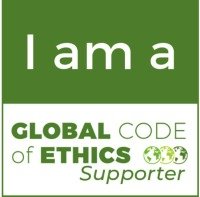This articles addresses diversity classification (i.e.., gays/lesbians, women, physical disability, religion, spirituality, etc.)
A) Everything (behaviors, traits, adjectives, images, etc.) I have ever seen, heard, or have been told about Native Americans/American Indians.
• Wise
• In touch with nature
• Spiritual
• Powerful
• Gambler
• Alcoholic
• Poor
• Prone to addictions
• Primitive
B) None of items above was the result of information acquired based on my personal experiences. Unfortunately, many people have limited experiences with this population.
C) None of items above was the result of information acquired based on other people in my life (i.e., family, friends, co-workers, etc.).
D) All of the items above were the result of information acquired by the media (i.e., television, books, movies, magazines, advertisements, etc.).
Most Native Hawaiians, who are part of Pacific Islanders, live in Hawaii but some of them live in the mainland. Only 17% of them have a bachelor’s degree and half of them are homeowners, although about 20% are poor. 80% of them live in families, as the family is very important to them.
Native Hawaiians are part of Polynesians, living in the midst of the Pacific Ocean. 400,000 of them became 40,000 in contact with European diseases for which they had no immunities. Caucasians took over the land. Hawaiians had no concept of land ownership. Europeans forbid indigenous Hawaiians from continuing their cultural practices. Hawaiians are very community oriented. Elders are revered. Hawaiians believed in separate gender roles and tasks.
Hawaiians did not believe in marriage or sexually owning someone. Mating within the same class status was encouraged. Same sex relationships were well known and accepted. Hawaiians believed we are related to nature and getting sick is the result of negative emotions, actions and thoughts. Hawaiians are religious and spiritual. Hawaiians partially keep their traditions.
Many Hawaiians today are obese and have issues with substance abuse. Many Hawaiians today are mixed racial and struggle with identity or internalized oppression. Internalized oppression happens when people of an oppressed class enact the negative traits and stereotypes of their class as defined by people with more social power.
The therapist should focus on keeping the client spirit alive in the face of oppression. Distancing from one’s ethnic group is a coping mechanism. I did that!
Hawaiians, as a minority, need help using their traditions to overcome health consequences of centuries of colonization. Some Hawaiians are disconnected from the rest of the world. Hawaiians encourage offenders to make amends, sharing and forgiveness.
Many Haitian families are geographically separated. Therapists must involve the extended family though a genogram, so the client is able to tell their stories and the intergenerational patterns. Haitian Americans have experienced a lot of trauma, prejudice, and bias in the US and Haiti. For this reason, many Haitians do not disclose their identity. A good therapist helps Haitians be proud of their cultural origins.
Many Haitians believe in God. An example of ritual to help Haitians cope with problems, struggles and stress is to ask them to write down their challenges, throw them in a large body of water and watch them disappear. Therapists should not generalize and should instead ask many questions about religion, emotions, and family life.
Questions uncover traumas as well, which Haitians do not necessarily correlate with their symptoms. Questions will unveil possible human right violations, given Haiti history of political upheaval. Therapists help connect past, present and future and help balance clients’ feelings.
Haitians mostly believe problems should be solved within families. Therapists must emphasize that therapy needs to be accompanied other practical resources. Lastly, therapists must stress that a continuation of therapy could benefit the entire family.
Even with African American Muslims, genograms facilitate therapy and collaboration with families. Clients have a subculture of verbal and non-verbal language, dress code, double consciousness, and race and power issues. Therapists must understand prejudice and counter transference.
If the therapist is non-Muslim, it is important to ensure that it is not an issue for the client. Muslims are the target of self-appointed patriots, when negative news arises about Islamic politics. Usually the police and the general public suspect Muslims during crimes.
The therapist must listen and affirm the client’s oppression. It is OK for the therapist to ask explanations about Islamic customs. It is a fact that some people use religions to run away from problems. The therapist must notice if religion masks the client’s challenges.
Islamic family life is patriarchal. Islamic women are aware of feminist concepts but still happily choose the Islamic way. If clients are uncomfortable with their relationships, therapists need to pay attention to what is painful to the clients.
Rituals are important to Muslims, including communal religious worship. Muslims emphasize the dress code, and, as such, therapists should dress conservative. Also, in respect of Muslim clients, therapist must ask the male head of the house client if it is OK to discuss the women of the household.
Muslims religiously believe in walking on a straight path. Therapist can encourage them to walk on a straight path by supporting healthy family life, personal growth, communication, and wisdom. Many slaves who were brought over from Africa were Muslim.
In conclusion, it is best that the therapist emphasized on community and family, which are important to Muslims. Family and community can coexist well, when there is no competition, in the eyes of Muslims. Muslims Americans are growing in number.
Article Source: http://EzineArticles.com/6213104







